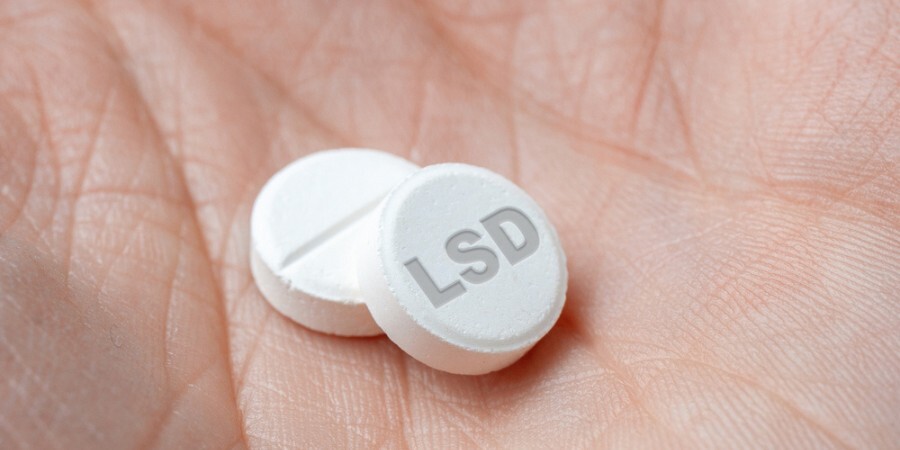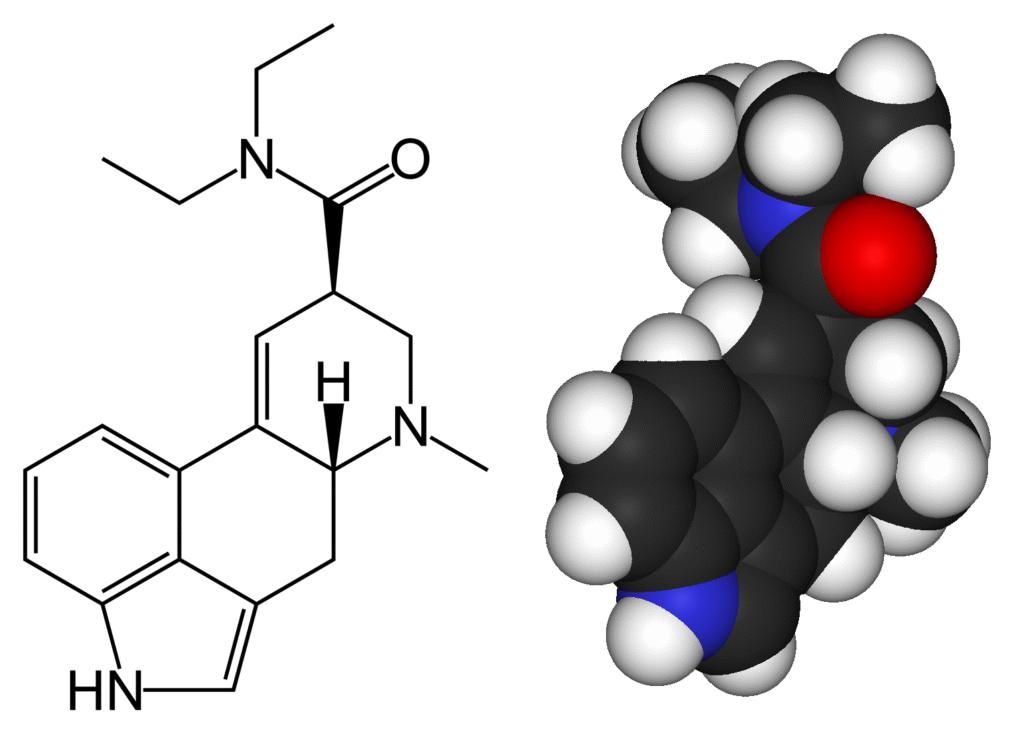LSD (Lysergic Acid Diethylamide): History, Effects, Dosage, and Cultural Impact

LSD (Lysergic Acid Diethylamide): History, Effects, Dosage, and Cultural Impact
LSD, short for Lysergic Acid Diethylamide and commonly called acid or Lucy, is one of the most well-known psychedelic drugs in the world. Famous for its powerful hallucinogenic effects, LSD has influenced science, medicine, spirituality, and culture for over 80 years.
Originally synthesized in the 1930s and popularized during the counterculture movement of the 1960s, LSD is now at the center of renewed scientific interest as researchers explore its potential for psychedelic therapy and mental health treatment.
At Packboy Store, we aim to provide accurate and accessible information about psychedelics, hallucinogens, and their cultural impact, helping readers make informed decisions and understand the complexities of these substances.
What is LSD?
LSD is a synthetic psychedelic compound derived from ergot fungus, which grows on rye and other grains. Discovered by Swiss chemist Albert Hofmann in 1938, LSD was initially created while searching for medical stimulants, but its hallucinogenic properties quickly became the focus of study.
LSD is:
- Colorless, odorless, tasteless in pure form
- Typically distributed in blotter paper squares, gel tabs, liquid drops, or microdots
- Extremely potent, active at doses as low as 20 micrograms
Because of its potency, LSD is measured in micrograms (millionths of a gram), making it hundreds of times stronger than many other hallucinogens.

Discovery and Early Research
Albert Hofmann’s famous “bicycle day” trip in 1943 marked the world’s first intentional LSD experience. He reported vivid visual distortions, heightened emotions, and altered consciousness, describing LSD as both profound and unsettling.
Throughout the 1950s and 1960s, LSD gained attention from psychiatrists and scientists who tested it as a possible treatment for:
- Depression
- Alcohol addiction
- Anxiety disorders
- Obsessive-compulsive disorder (OCD)
- Post-traumatic stress disorder (PTSD)
Research suggested that LSD acted as a serotonin receptor agonist, altering brain function and temporarily enhancing neuroplasticity. Early studies indicated potential benefits, but growing recreational use and political backlash eventually led to LSD being banned worldwide.
LSD in the Counterculture Movement
The 1960s counterculture revolution transformed LSD from a laboratory drug into a symbol of freedom, rebellion, and expanded consciousness. Influential figures like Timothy Leary, Ken Kesey, and the Beatles promoted LSD as a path to enlightenment and creativity.
Its impact was massive:
- Musicians and artists used LSD to inspire groundbreaking work in rock, jazz, and visual arts
- Spiritual seekers embraced acid as a tool for mystical experiences
- Anti-war movements adopted LSD as a symbol of resistance against mainstream culture
By the late 1960s, LSD had become both celebrated and feared, associated with creativity and spiritual awakening, but also bad trips, paranoia, and social unrest.

Effects of LSD
The effects of LSD are unpredictable, depending on the dose, environment, and mindset (often called “set and setting”). Trips usually last 8–12 hours and vary widely between users.
Common Positive Effects:
- Intense visual hallucinations (patterns, colors, shapes, trails of light)
- Altered sense of time (minutes feeling like hours)
- Spiritual or mystical experiences
- Heightened creativity and imagination
- Feelings of euphoria and connection with others or nature
- Synesthesia (hearing colors, seeing sounds)
Possible Negative Effects (Bad Trips):
- Anxiety and paranoia
- Intense confusion or fear
- Distorted self-image
- Panic attacks
- Temporary loss of reality perception
Physical and Psychological Risks
While LSD is not considered physically addictive, it can create psychological dependence in some users. Risks include:
- Hallucinogen Persisting Perception Disorder (HPPD): flashbacks, recurring hallucinations
- Increased tolerance with repeated use
- Dangerous behaviors due to distorted perception
- Potential worsening of underlying mental health conditions
Unlike opioids or stimulants, LSD does not cause direct physical damage or overdose in normal doses, but extremely high doses can lead to dangerous psychological reactions.
Microdosing LSD: A Modern Trend
Microdosing LSD—taking very small doses (5–20 micrograms) below the hallucinogenic threshold—has become popular in Silicon Valley, wellness circles, and creative industries. Advocates claim microdosing can:
- Improve focus and productivity
- Boost creativity
- Reduce anxiety and depression symptoms
- Enhance social interactions
Scientific research is still in early stages, but controlled trials are exploring whether microdosing LSD can be safely integrated into psychedelic medicine and therapy.
LSD Dosage and Potency
LSD’s strength is measured in micrograms (µg). Effects vary depending on the dose:
- Microdose (5–20 µg): Subtle mood and focus enhancement
- Low dose (20–75 µg): Mild visual distortions, enhanced creativity
- Moderate dose (75–150 µg): Classic psychedelic experience
- High dose (150–300 µg): Intense hallucinations, ego dissolution, altered reality perception
- Very high dose (300+ µg): Overwhelming effects, risk of panic or psychosis
Because LSD is active in such tiny amounts, dosage accuracy is critical.
Legal Status of LSD
Today, LSD is classified as a Schedule I controlled substance in the United States and many other countries. This means it is considered to have no accepted medical use and high abuse potential, despite growing evidence of therapeutic benefits.
Legal Overview:
- United States & UK: Schedule I/Class A drug (illegal to possess, sell, or manufacture)
- Canada: Schedule III drug, illegal but sometimes researched under special licenses
- European Union: Varies by country, but largely prohibited
- Research exceptions: Clinical trials permitted in some regions for psychedelic-assisted therapy
The legality of LSD remains one of the most debated topics in modern drug policy.
LSD in Modern Research and Therapy
Despite decades of prohibition, LSD is returning to the scientific spotlight. Universities and research centers are exploring its potential for:
- Psychedelic-assisted therapy for depression and PTSD
- Treatment of cluster headaches
- Exploring consciousness and brain connectivity
- Supporting end-of-life anxiety relief in terminally ill patients
If future trials confirm safety and effectiveness, LSD could once again become part of mainstream psychiatric medicine.
Cultural Legacy of LSD
From Woodstock to Silicon Valley, LSD has influenced music, art, technology, and philosophy. Its cultural impact includes:
- Psychedelic art and music of the 1960s and 70s
- Spiritual exploration and New Age movements
- The rise of psychedelic festivals like Burning Man
- Inspiration for modern discussions on psychedelic decriminalization
LSD has shaped both underground subcultures and mainstream conversations about consciousness and human potential.
Final Thoughts
LSD remains one of the most potent, fascinating, and controversial psychedelics in existence. From Albert Hofmann’s accidental discovery to its role in the counterculture and its reemergence in modern science, LSD continues to challenge how we think about the mind, medicine, and society.
At Packboy Store, we believe education is the key to responsible understanding of psychedelic substances. Whether you’re curious about LSD’s history, its effects, or its future in therapy, staying informed is essential.
Quick FAQ on LSD
Q: Is LSD dangerous?
A: LSD is not physically addictive, but psychological risks and dangerous behavior during trips can make it risky without proper guidance.
Q: What does an LSD trip feel like?
A: Experiences vary but often include visual hallucinations, altered time perception, heightened emotions, and spiritual insights.
Q: Can you overdose on LSD?
A: Fatal overdoses are extremely rare, but very high doses can cause severe psychological distress and medical complications.
Q: Is LSD legal anywhere?
A: In most countries, LSD is illegal, but some regions allow research trials and psychedelic therapy under strict regulations.
